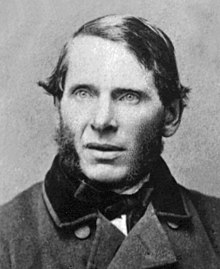Grímur Thomsen
You can help expand this article with text translated from the corresponding article in Icelandic. (January 2022) Click [show] for important translation instructions.
|

Grímur Thomsen (May 15, 1820 – November 27, 1896), Icelandic poet and editor, was born in Bessastaðir in 1820. He was the son of Þorgrímur Tómasson, a goldsmith. In 1837, he went to the University of Copenhagen, where he studied law and philology, but he also became interested in philosophy and aesthetics. He became an enthusiastic follower of the Pan-Scandinavian movement, although this was not generally favored by his countrymen.[1]
At the University of Copenhagen, Thomsen wrote a dissertation on Byron and received a master's degree. Because of the quality of his written dissertation, he received a scholarship to travel around Europe for two years. Eventually he would be awarded a doctoral degree for his written dissertation on Byron. In 1848, Thomsen entered the Danish diplomatic service. In 1851, he returned to Copenhagen, where he was appointed chief of the ministry of foreign affairs. He retired in 1866 and returned to Iceland.[1] In Iceland, he became a member of parliament (Alþing) and a farmer in Bessastaðir. Thomsen died in 1896.
Thomsen is considered one of Iceland's most important romantic era writers. In addition to being a poet (two separate collections, Reykjavik, 1880, and Copenhagen, 1895) he is also the author of numerous critical and historical essays in Icelandic and Danish. Thomsen was an admirer of Greek literature and translated a great number of poems from Greek into Icelandic.[1]
Notes[edit]
- ^ a b c Blöndal 1911.
References[edit]
- This article incorporates text from a publication now in the public domain: Blöndal, Sigfús (1911). "Thomsen, Grímur". In Chisholm, Hugh (ed.). Encyclopædia Britannica. Vol. 26 (11th ed.). Cambridge University Press. p. 871.
External links[edit]
- Works by or about Grímur Thomsen at Internet Archive
- Grímur Thomsen at althingi.is (in Icelandic)
